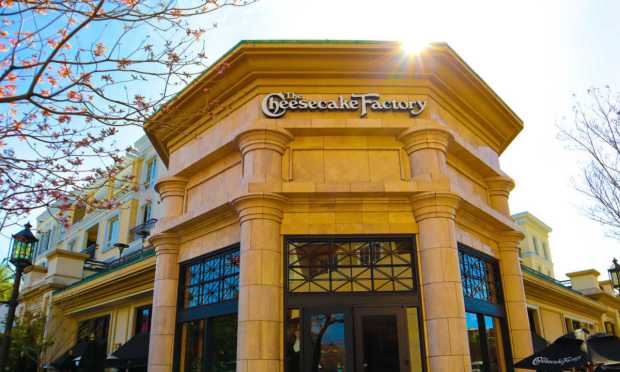Wall Street Wobbles on Cheesecake Factory as Inflation Hits Restaurant Spending

As inflation cuts into restaurant spending, Goldman Sachs has cut its opinion of Cheesecake Factory’s stock.
This, as the powerful investment bank downgraded the restaurant chain to sell from neutral, Seeking Alpha reported Monday (Dec. 12), predicting the mall-based brand will suffer from traffic declines and fewer customers as inflation rises. Jared Garber, lead equity research analyst of the restaurant sector at Goldman also lowered his price target on the stock to $29, or about 10% below current levels.
In November, Cheesecake Factory CFO Matthew Clark told investors on the company’s Q3 earnings call that the chain’s traffic was essentially flat for the quarter and was “right around 90% of historical on-premises levels,” a trend he said that had been consistent and stable all year.
While shares of the restautant chain are down about 15% this year, they have rallied almost 20% from a low six months ago.
The news comes as many consumers have reined in their restaurant spending in an effort to save money amid the economic slowdown. Research from the August edition of PYMNTS’ Consumer Inflation Sentiment study “Consumer Inflation Sentiment: Inflation Slowly Ebbs, but Consumer Outlook Remains Gloomy,” which drew from a survey of more than 2,100 consumers, found that 78% of diners are eating at home more often to save money.
Get the study: Consumer Inflation Sentiment: Inflation Slowly Ebbs, but Consumer Outlook Remains Gloomy
With this period of inflation following on the heels of the unpredictable peaks and valleys of 2020 and 2021, it has been harder to get a sense of what the norm will be for diners going forward.
“We’re seeing so much influenced by either the economy or fears of what’s going to happen in the economy, so I think we’re seeing some behavioral shifts right now that might not be reflective of permanent trend,” Marc Butler, senior vice president of strategic planning/off-premises at Hooters, told PYMNTS in an interview. “It’s hard to say [how much of] what we’re seeing now is permanent and what is just a short-term kind of fear tactic that’s going on.”
United States Bureau of Labor Statistics (BLS) data reported Tuesday (Dec. 13) reveals that restaurant prices are up 8.5% year over year, and grocery prices are up 12%. As such, with restaurants pricing well below the overall food inflation rate of 10.6%, it appears that are letting their margins take a hit in an effort to prevent further trade down to food at home.
In spite of these efforts to absorb price increases, diners are still feeling the sticker shock.
Research from PYMNTS’ September study “New Reality Check: The Paycheck-To-Paycheck Report: The Inflation Edition,” collaboration with LendingClub, which drew from an August census-balanced survey of nearly 3,500 U.S. consumers, found that 51% of consumers noted “very or extremely considerable” increases in the price of food from restaurants in the previous 12 months.
Read the report: New Reality Check: The Paycheck-To-Paycheck Report: The Inflation Edition
In fact, consumers feel the impact of these food price increases even more than the BLS-measured amounts. As PYMNTS’ Karen Webster points out in a recent feature, “Seven months of consumer data as reported by PYMNTS show that consumers consistently say that the prices they pay for food, gas, clothing and household essentials are more than twice as high as what government data reports.”
In light of these sensitivities, in addition to eating at home more, the August study also found that consumers have been switching to lower-priced restaurants, with 38% doing so. Overall, 86% of consumers have made some kind of change to their restaurant dining habits in an effort to curb spending.
